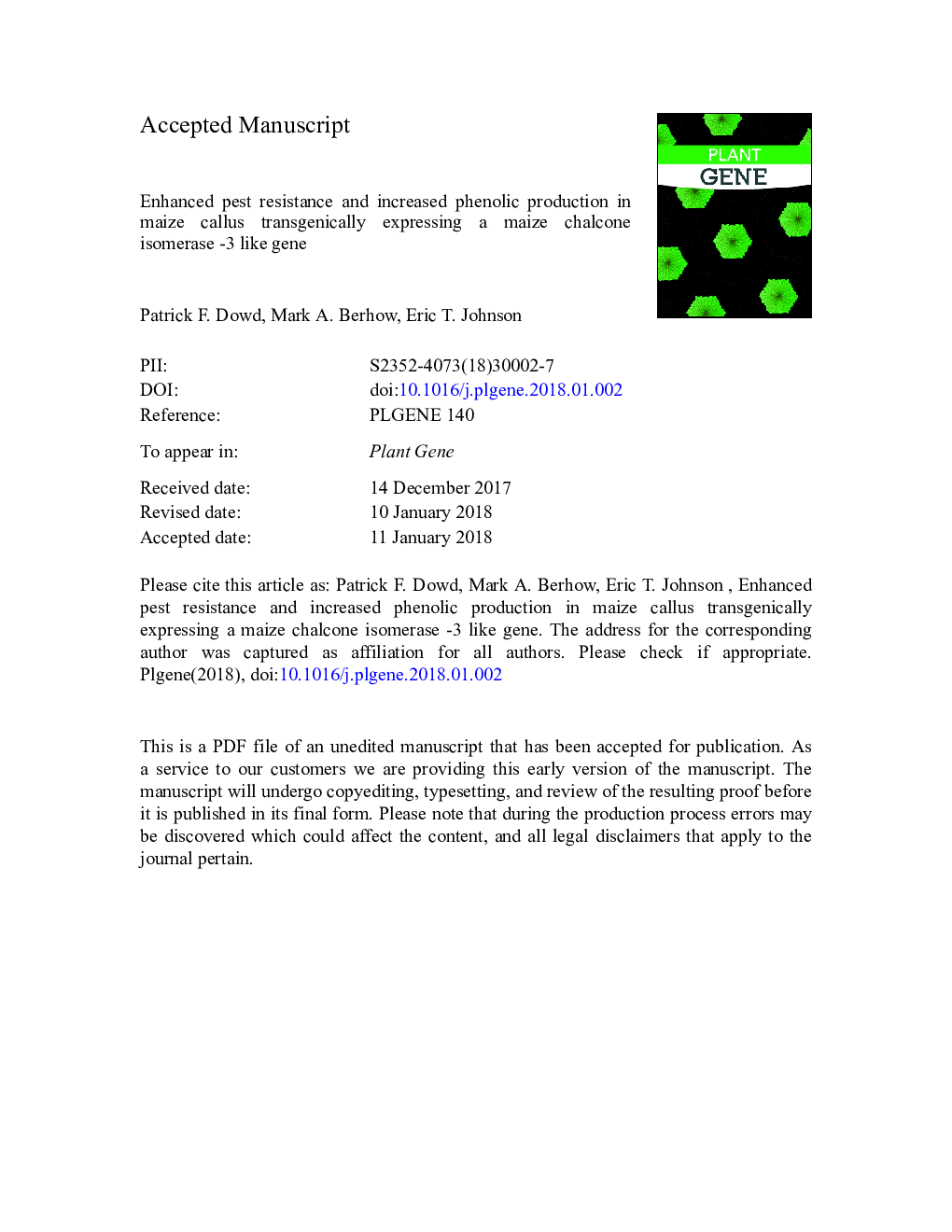| Article ID | Journal | Published Year | Pages | File Type |
|---|---|---|---|---|
| 8647742 | Plant Gene | 2018 | 20 Pages |
Abstract
Significant losses in maize production are due to damage by insects and ear rot fungi. A gene designated as chalcone isomerase 3-like (CI3), located in a quantitative trait locus for resistance to Fusarium ear rot fungi, was cloned from a Fusarium ear rot resistant inbred and transgenically expressed in maize callus. Transformants were often more resistant to feeding by the corn earworm and fall armyworm compared to glucuronidase (GUS) callus transformant controls. The transformed callus was also more resistant to colonization by the mycotoxin producing ear rot fungi Fusarium graminearum, Fusarium proliferatum, and Fusarium verticillioides. Chemical analysis unexpectedly indicated increased production of several phenolic compounds, instead of flavonoids, compared to GUS controls. The levels of one of these, a glucosylated ferulic acid, were significantly correlated with the degree of growth inhibition of F. graminearum. Increased levels of a peroxidase isozyme previously associated with pest resistance also occurred in these CI3 transformants. The production of phenolics and higher levels of a peroxidase suggests this gene product is behaving as a fatty acid binding protein and enhancing transport of fatty acids involved in the production of jasmonic acid, which can induce the biosynthesis of resistance molecules. Breeding for enhanced expression of this gene can potentially contribute to resistance to both insects and plant pathogenic fungi, thereby contributing to sustainable production and better quality food.
Related Topics
Life Sciences
Agricultural and Biological Sciences
Plant Science
Authors
Patrick F. Dowd, Mark A. Berhow, Eric T. Johnson,
